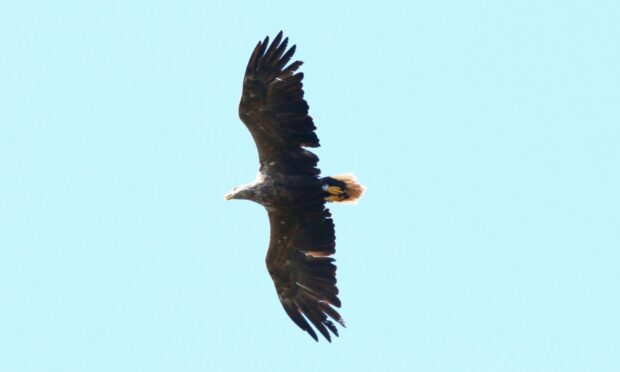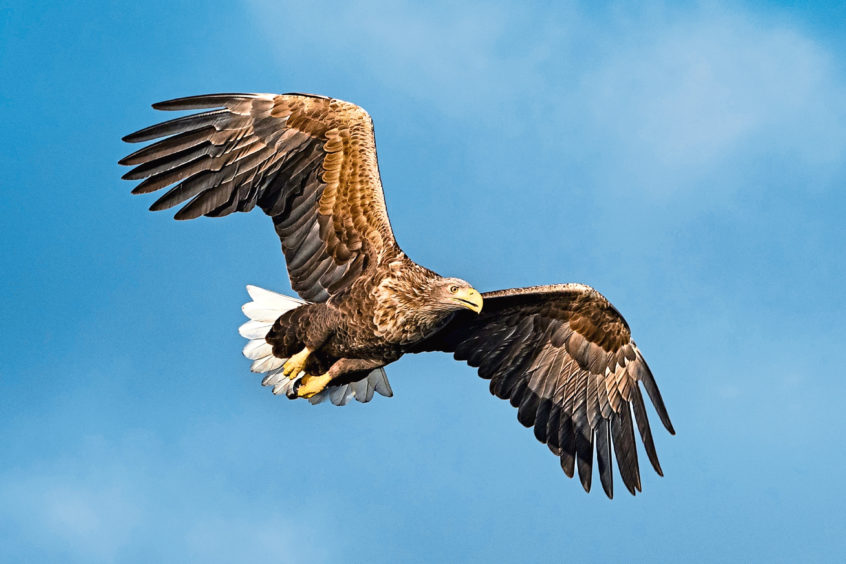The UK’s oldest white-tailed sea eagle has been identified on the Isle of Mull after being spotted during shooting of the BBC’s Winterwatch.
The male, known as Skye, is 28 years old, and it has been some time since a confirmed sighting of him.
The large bird of prey was identified by a British Trust for Ornithology (BTO) ring attached to a leg before he fully fledged.
The number – ZZ0768 – was visible in footage shot by cameraman Jim Manthorpe for Winterwatch.
If ornithologists can confirm she is still alive, Skye’s mate of 25 years, Frisa, would be older at 30 years old.
Frisa hatched on Mull in 1992, and is named after a loch on the island.
For many years the mating pair’s annual nest site and egg laying abilities has giving thousands of tourists a spectacular show, as they wait, remotely, on tenterhooks to find out if they have produced a brood.
This week the BBC cameraman filmed a female with Skye, but her ring was turned away from the camera and the identification numbers were not visible.
Dave Sexton, RSPB officer on Mull told us: “If I was a betting man I would say that it is likely that it is Frisa he is with.
“I am feeling very optimistic that it is her. There are a few signs, she has a tag on her right leg, and she does not have a green tag on her right wing.
“I have seen Frisa since she was born on Mull in 1992. She is part of the reason that I moved back to Mull.”
Sea eagles are doing ‘very well’
Mr Sexton said that there were 22 breeding pairs of sea eagles on Mull, and that in terms of conservation they were doing very well.
The white-tailed eagle is the UK’s largest bird of prey and can have a wingspan of more than 6.5ft.
In the wild they live up until their mid 20s so if Frisa is alive and well, Mr Sexton said she was living on “borrowed time”.
In captivity the birds can live up to the age of 40.
Sea eagles were reintroduced in the 1970s to the Isle of Rum.
Between 1975 and 1985, the Nature Conservancy Council (NCC) released 82 juveniles – which was a national nature reserve in the heart of the species’ former range.
Sea eagles that are tagged can be followed on an online tracking system that is free to download via the RSPB.
When did the white tailed sea eagle die out in Scotland?
Numbers of sea eagles started to decrease dramatically in the early 19th century because of persecution that resulted in the loss of many of the western European populations.
Expects believe the species became extinct in the UK as a result of persecution by shepherds, gamekeepers, fishery owners, skin collectors and egg collectors. Habitat loss was not a factor.
While conservation measures allowed the species to recover in the 1970s, the impact of mercury and of organochlorine and other pesticides continued to reduce the breeding success into the 1980s.
In 2020, there was joy when a pair of sea eagles successfully bred in Deeside for the first time in 200 years.
Two chicks were hatched after the birds nested on the Mar Estate, and were given the names Victoria and Albert.

